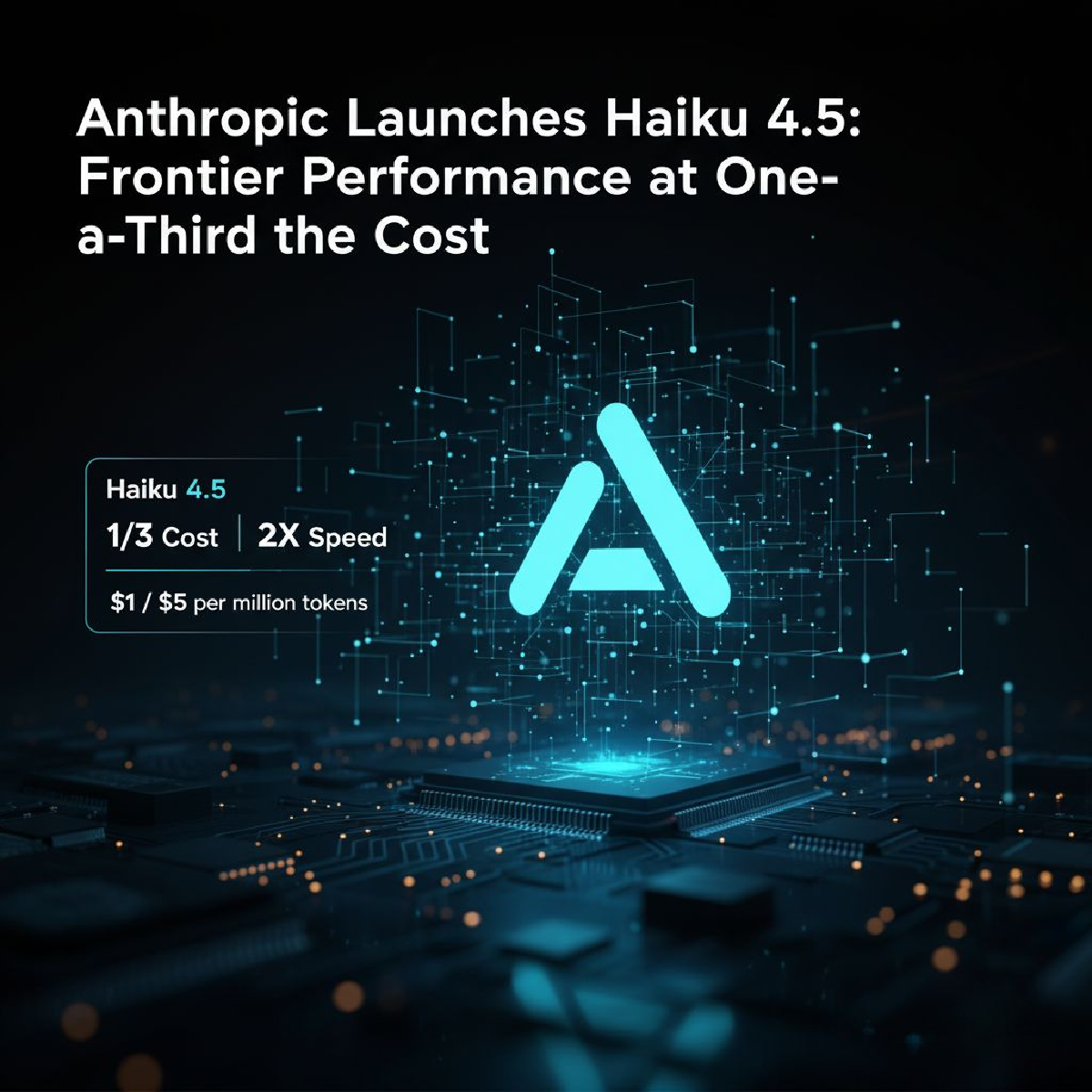Anthropic just launched Claude Haiku 4.5, and the performance-to-cost ratio is remarkable. What was frontier five months ago (Sonnet 4) is now available at one-third the cost and twice the speed. That’s not incremental improvement. That’s Moore’s Law for AI.
What’s Actually New#
Haiku 4.5 matches Claude Sonnet 4’s coding performance while costing just $1 per million input tokens and $5 per million output tokens. It’s more than twice as fast and even surpasses Sonnet 4 at certain tasks like computer use.
This isn’t a dumbed-down budget model. It’s frontier capability from five months ago, optimized and repriced. Anthropic claims it’s their “safest model yet” by alignment metrics, rated ASL-2 compared to the more restrictive ASL-3 for Sonnet 4.5 and Opus 4.1.
The Strategic Play#
Haiku 4.5 enables something clever: Sonnet 4.5 (their frontier model) can break down complex problems into multi-step plans, then orchestrate multiple Haiku 4.5 instances to execute subtasks in parallel. Premium thinking, budget execution.
That’s the real value proposition. Not replacing frontier models but making sophisticated agent architectures economically viable. Run expensive reasoning where you need it, cheap execution everywhere else.
How They Did It#
Lower prices usually mean quality compromises. Not here. Haiku 4.5 achieves frontier performance from five months ago because AI capability is advancing faster than cost structures.
What’s expensive to run today becomes cheap to run tomorrow as infrastructure improves, models optimize, and techniques mature. Anthropic isn’t cutting corners. They’re capturing efficiency gains and passing them to customers.
The Competitive Pressure#
This puts pressure on OpenAI and Google. If Anthropic can deliver five-month-old frontier performance at $1/$5 per million tokens, what should current frontier models cost? And what should budget models cost?
The answer is probably “less than they do now.” Price competition is heating up not because companies are desperate, but because the technology is getting genuinely cheaper to operate.
Who Benefits#
Developers building agent systems are the obvious winners. Multi-agent architectures that were too expensive become viable. Real-time applications that needed speed get it without sacrificing intelligence.
Anthropic designed Haiku 4.5 for orchestration, parallel execution, and rapid iteration. That suggests they’re betting on agentic AI as the next wave, not just better chatbots.
The Bigger Picture#
Haiku 4.5 proves something important: AI capability is advancing faster than costs. What’s frontier today is mid-tier in six months and budget in a year. That compression happens through optimization, not quality reduction.
If this pace continues, truly capable AI becomes commodity infrastructure. The competitive advantage shifts from “who has the best model” to “who builds the best products with widely available models.”
That’s a different game than we’ve been playing.
Try Haiku 4.5: Read the full details at Anthropic’s announcement.


